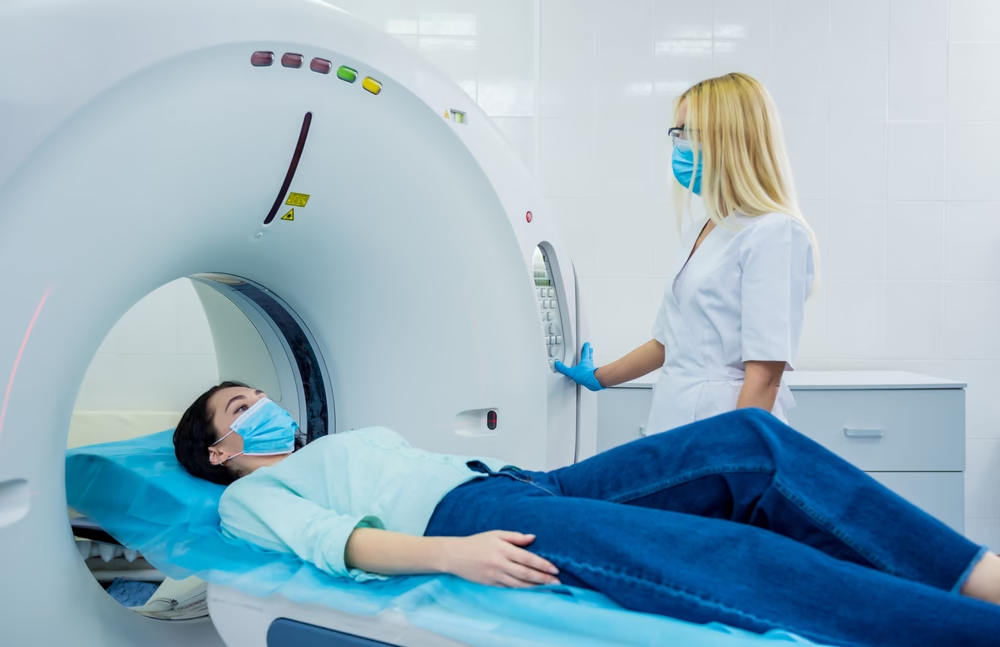“Doctor, which angiography is best for me? CT or the traditional one?”
This is the one question that is mostly asked of the SAAOL Heartcare Delhi heart specialists almost every other day. Why? Read Ahead!
Because it’s not as simple as Google presents it. We’re in an era during which health information is overwhelming, but actual understanding is fading. Dr. Bimal Chhajer’s 30+ years of research have significantly shown that the best non-surgical heart treatment in India should be led by the non-invasive heart screening method, which is known as CT Angiography. When it comes to CT angiography v/s traditional angiography, you should be aware of which method will be the best for diagnosing your heart blockage so that you can go for the heart blockage treatment accordingly. So today, let’s take you through your heart’s roadmap — your coronary arteries — and how to best figure out what’s going on beneath the surface.
But first, a little disclaimer no one gives you:
Angiography is more than just a test. It’s a decision tool. A turning point. It determines whether you will receive a stent, bypass surgery, or non-invasive EECP Treatment.
Which is why picking the right kind of angiography isn’t a question of tech preference — it’s about altering the direction of your life.
So, don’t leave it to Google, hearsay, or, worse yet, a rushed OPD consult.
Let’s get into it.
Table of Contents
ToggleWhat Is Angiography?
Angiography is a test to look at your blood vessels, especially those that supply your heart (your coronary arteries). Why? Because blockages in these arteries lead to angina, breathlessness, or heart attacks.
Right now, we have two relatively big ways to do this:
What is Conventional Angiography (CAG)?
It’s the gold standard, also known as Invasive Coronary Angiography.
A catheter is threaded through your wrist or groin, dye is used to highlight the coronary arteries, and X-rays are used in real time to reveal blockages.
What is CT Coronary Angiography (CT-CA)?
This one’s non-invasive. You’re on the CT scan table, and you receive a contrast dye into a vein in your arm. Powerful scanners take elaborate pictures of your heart and arteries.
Sounds similar? Well… not quite. This is a bit like inquiring: “Should I wear a raincoat, or bring an umbrella?”
That depends on where you’re headed, how hard it’s raining, and whether you have somewhere to dry off. In medical terms, your symptoms, risk profile, heart rate, kidney function, and urgency of making a diagnosis are your ailment matters.
Mind-Blowing Truth #1: CT Angiography Can Detect “Invisible” Heart Disease

Here’s something that will shock you.
Conventional angiography checks for narrowing inside the artery, not the wall of the artery.
That means: If you have early buildup of plaque, soft cholesterol deposits, or inflammation in the wall of the artery, conventional angiography can appear completely “normal.” But a CT Angiogram can find these, even before they’ve caused narrowing or symptoms. This is game-changing. Since most heart attacks are caused by a rupture in the plaque, not just a slow buildup. And CT Coronary Angiography (CT-CA) can catch vulnerable plaques early, long before your treadmill test or stress echo reveals anything.
Who Needs CT Angiography?
If you’re someone who:
- Has unexplained chest pain but has a negative stress test.
- Has some almost-risk factors such as borderline mild cholesterol, early diabetes
- Desires a preventative cardiology lifestyle checkup (yes, there is a lot of this happening in corporate wellness now, which is great!)
- Has a family history of sudden death from heart disease or fatal coronary artery disease before age 50.
…then CT Angiography is your Superman.
It’s quick, safe, and it tells us many more things than “yes/no blockage.”
Why Is Conventional Angiography Still Called the ‘Gold Standard’?
Let’s get straight to the point: If you are struggling, high risk on ECG, positive stress test, or have previously had a stent, then, yeah, CA is still the best. Because it’s not just diagnostic — it is also therapeutic.
Meaning:
- If doctors find a severe blockage, they can immediately place a stent.
- It allows pressure measurements- Fractional Flow Reserve (FFR), which helps decide if a stent is needed.
- It’s the only way to treat complex multi-vessel disease or do pre-bypass planning.
Think of it like this:
CT Angiography is the drone — rapid, detailed, in the air.
Conventional Angiography is your surgeon’s scalpel — it cuts and heals.
Mind-Blowing Truth #2: CT Angiography Reveals “Calcium Score” — Your Silent Risk Indicator

Here’s what most patients don’t realize:
Before your CT Angiography, we frequently do a calcium scoring scan. Then you get a number — that’s your Coronary Artery Calcium (CAC) Score.
What is a CAC or Coronary Artery Calcium score?
A CAC score measures the amount of calcified plaque you have in your coronary arteries, which causes heart blockages
A CAC Score of:
- 0 = Excellent. No visible plaque. Very low risk.
- 1–100 = Early build-up. Require lifestyle modification and possibly meds.
- 100–400 = Moderate risk. Time to act seriously.
- 400+ = High risk. You are a walking time bomb of the heart.
This score is a crystal ball, predicting future heart disease better than cholesterol or BP levels. And you don’t get this from traditional angiography.
Mind-Blowing Truth #3: Conventional Angiography Can Miss a Dangerous Disease
Microvascular disease can be overlooked with traditional angiography, particularly in women.
You might have:
- Fatigue
- Chest tightness
- Shortness of breath
But your angio is “normal.” So doctors might say, “It’s anxiety.”
Wrong.
You could have coronary microvascular dysfunction — small arteries too small to show up on an angiogram. But CT Angiography and perfusion imaging can indirectly point toward this. And for women over 45 with unexplained symptoms, it can be life-saving.
CT Angiography vs Conventional Angiography
| Feature | CT Angiography | Conventional Angiography |
| Invasiveness | No | Yes |
| Risk of complications | Very low | Moderate (bleeding, infection) |
| Time | 10-15 mins | 30 mins + hospital time |
| Requires hospital stay | No | Sometimes (esp. if the stent is done) |
| Shows early disease (plaque in walls) | Yes | No |
| Can treat blockages (e.g., stent) | No | Yes (in some places) |
| Suitable for a preventive check-up? | Yes | Not practical |
| Radiation exposure | Moderate | Low-moderate |
| Need for high heart rate control | Yes (may need beta-blocker) | No |
When it comes to seeing your heart, not only is CT Angiography a different test, it’s next-gen better. Unlike conventional angiography, which provides a 2D outline of where the dye is going, CT Angiography provides high-resolution, 3D images of the actual coronary arteries, including the walls of the arteries as well as the lumen (the hollow channel of a tube). What makes it so advanced is the use of multi-slice CT scanners — today’s top-of-the-line scanners can create up to 256 or even 320 slices per rotation, which allows them to scan your whole heart in less than a single heartbeat. The scanners are so fast and accurate, they freeze the motion of the beating heart, so doctors actually see tiny, soft plaques hiding in the wall — plaques whose presence traditional angiography simply can’t show. Add in software products that offer advanced AI-powered reconstruction, real-time calcium scoring, and even FFR-CT (fractional flow reserve without a wire), and you’ve got a diagnostic test that doesn’t just look for disease; it predicts risk. In short, CT Angiography is not replacing traditional angiography — it’s bringing the conversation to “do you have a heart blockage? to how healthy are your arteries?
Let’s Talk About Your Fears
“What if something is found? What then?”
If you do a CT Angiography and something suspicious shows up, you can always plan a proper, scheduled conventional angiography safely, calmly, and early. Not as an emergency.
“What about dye? Will it affect my kidneys?”
Good question. Contrast dye is used for conventional angiography and CT angiography. If your creatinine is elevated or if you have diabetes, your doctor will pre-medicate you, hydrate you, or use a safer protocol.
“Which is the safer option for heart blockage detection for the elderly?”
CT Angiography is much safer for elderly patients, especially those who are frail, have comorbidities, or are not candidates for surgery.
So, Which Test Should You Get?
Let us simplify this:
- For symptomatic people with a positive stress test or known heart disease —
Opt for traditional angiography.
- If you do not have a big symptom, but want the peace of mind of early detection —
Opt for CT Angiography + Calcium Score.
- If you are a woman who experiences unexplained fatigue or chest pain —
Go for CT Angiography + microvascular assessment.
- If you had stents or a bypass already —
You may need conventional angiography for treatment planning.
Choose What’s Best For You
This is not about test results. It’s knowing your heart better than ever. From a corporate employee to a concerned daughter to a 52-year-old mother with palpitations to a diabetes patient unable to make sense of a normal report —Your body deserves to know, right now, what’s happening inside your arteries, without fear, immediately, when and where you need it. You deserve answers. You deserve prevention. You deserve control. Now you understand what would be better, CT angiography or Conventional Angiography. If you still have doubts, then no worries because SAAOL Heartcare experts are right here to answer them. For more information or to have a Dr. Bimal Chhajer appointment, contact us today!


